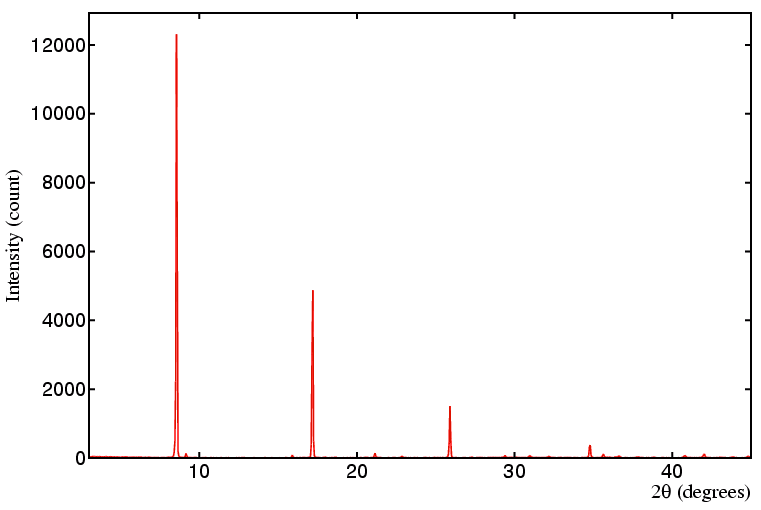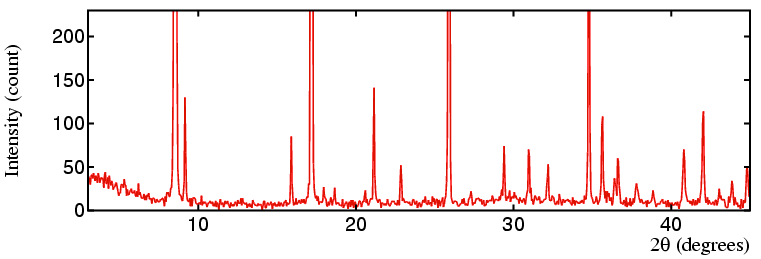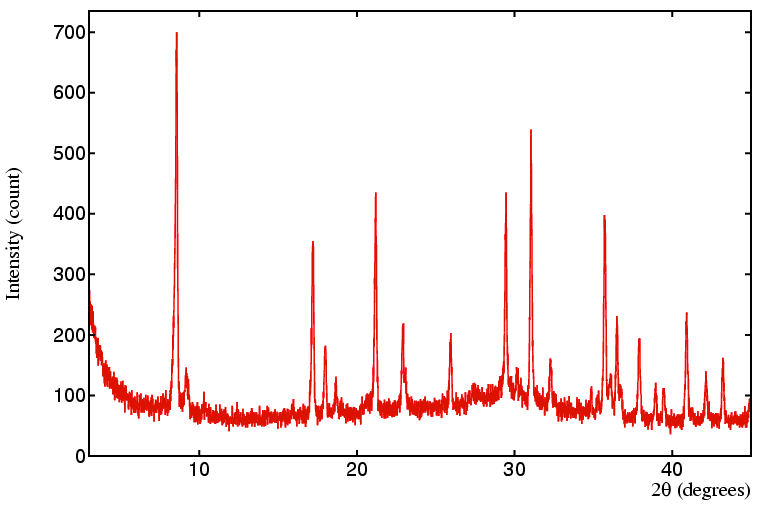 |
Preferred Orientation |
 Course Material Index
Course Material Index
 Section Index
Section Index
 Previous Page
Previous Page
 Next Page
Next Page
Preferred Orientation
The biggest disadvantage of mounting samples on a flat-plate is that
many of them (and probably even a majority of them?) end up with surface
preferred orientation due to the flattening process.
This is spectacularly illustrated for the hydrated cement phase
Ca4Al2(SO4)O6.16H2O
for which powder diffraction data was collected in a "routine" manner
on a Bragg-Brentano diffractometer as shown below:
 At first sight only a few peaks are seen due to very strong
preferred orientation of the crystallites within the powder.
(The four most intense peaks may be indexed by eye as 001, 002,
003, and 004 layer lines.)
Closer inspection of the data shows the presence of other hkl
reflections as shown below:
At first sight only a few peaks are seen due to very strong
preferred orientation of the crystallites within the powder.
(The four most intense peaks may be indexed by eye as 001, 002,
003, and 004 layer lines.)
Closer inspection of the data shows the presence of other hkl
reflections as shown below:
 This sample was also measured in transmission
geometry in a 0.5 mm capillary and the results below were obtained:
This sample was also measured in transmission
geometry in a 0.5 mm capillary and the results below were obtained:
 This is an extreme example which can occur when the Bragg-Brentano geometry
is used. You should be aware that other less extreme cases usually pass
unnoticed (unless a comparison is made using the same sample measured
in transmission geometry).
The effect of preferred orientation as shown here must not be confused
with the effect of texture which is discussed next.
This is an extreme example which can occur when the Bragg-Brentano geometry
is used. You should be aware that other less extreme cases usually pass
unnoticed (unless a comparison is made using the same sample measured
in transmission geometry).
The effect of preferred orientation as shown here must not be confused
with the effect of texture which is discussed next.
 Course Material Index
Course Material Index
 Section Index
Section Index
 Previous Page
Previous Page
 Next Page
Next Page




